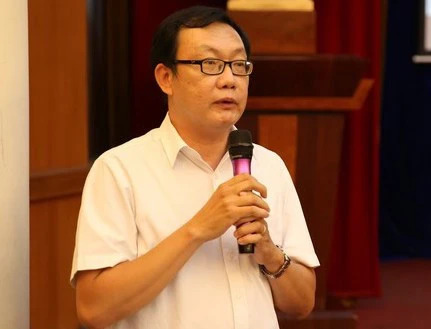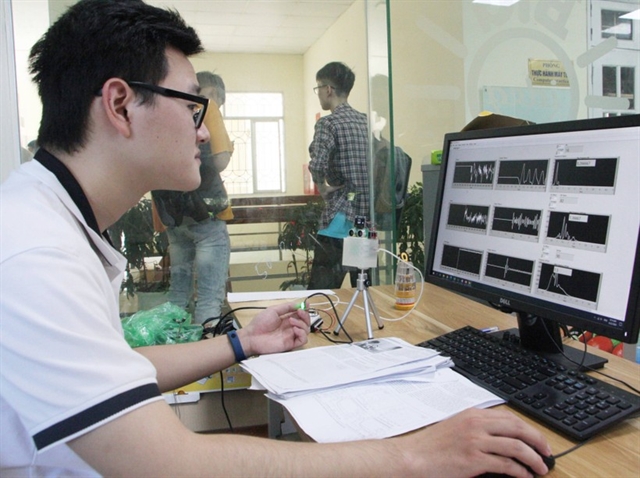 Opinion
Opinion

 |
| Lê Quốc Anh works on his non-contact heart rate measurement system used to classify dengue fever patients. Photo giaoducthoidai.vn |
HÀ NỘI - A student of the University of Engineering and Technology at Vietnam National University has invented a non-contact heart rate measurement system to classify dengue fever patients.
Lê Quốc Anh, an Electronic and Telecommunications student, said in the field of medical health, non-contact measurements in things like heart rates were highly prized and when the pandemic started, the need for measuring a person's survival rates, without touching them, became even more necessary.
He said: “Normally, to confirm that a patient has been infected with dengue fever, the doctors must do a blood test which takes a lot of time. But quickly classifying and identifying dengue patients is really important.”
There are some studies showing that the heart rate of people with dengue fever is higher than that of normal people. Therefore, it is possible to quickly screen people for dengue fever based on the heart rate parameters measured before taking confirmed test, according to Anh.
Assisted by Dr Lưu Mạnh Hà, lecturer at the University of Engineering and Technology, Quốc Anh invented a system which uses radar technology to measure heart rates, broadcasting the result with low transmit power, without needing any physical contact.
This device can quickly determine the patient’s heart rate within five seconds by processing the wave signal reflected from the patient's chest. The person being checked just needs to stand still at a distance of 20 cm in front of the device and breathe evenly. Compared to commercial contact heart rate measuring devices, this device has an accuracy of 96 per cent.
Anh said that a non-contact system for measuring the temperature of sick people had been applied using infrared cameras, however these devices often did not have high accuracy due to the impact of environmental temperature and when sick people take fever-reducing medicine. Because using radar to measure heart rate had only recently received attention, commercial products had not yet appeared on the market.
The biggest difficulty was that the research required a lot of biomedical as well as in-depth knowledge. Anh must read many reference documents, implement ideas on actual equipment and conduct measurement and evaluation experiments.
Dr Hà said the system proved its effectiveness and practicality as it could research, identify and quickly classify dengue fever patients before biochemical testing.
At the end of his third year, Quốc Anh asked to join the medical and telehealth research group at the school's Advanced Institute of Engineering and Technology. Because it was a new field, finding references to learn from was difficult, he said.
His project is a cooperation between the University of Engineering and Technology, Vietnam National University, the University of Electro-Communications, Japan and Việt Nam’s Central Hospital of Tropical Diseases.
Anh will continue to research and improve the system to operate it stably in environments outside the laboratory and in hospitals.
Based on the laboratory model, more signals will be collected from a large number of patients and methods will be proposed to improve the collection of vital signs from non-contact measurement systems.
Biomedical research is also a direction that the Institute for Advanced Engineering and Technology wants to explore in the future, so the department hopes that Quốc Anh and other students will continue to research and develop the project, according to Dr Hà. VNS




